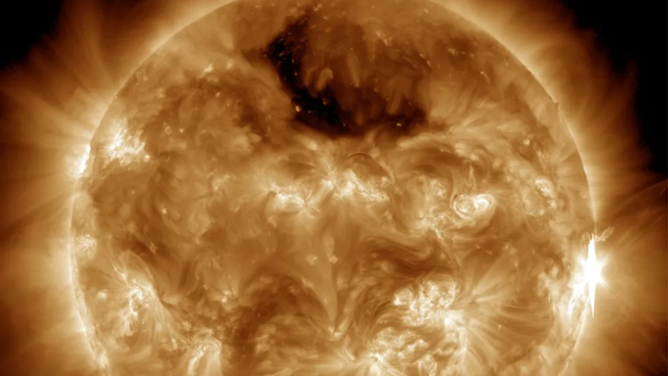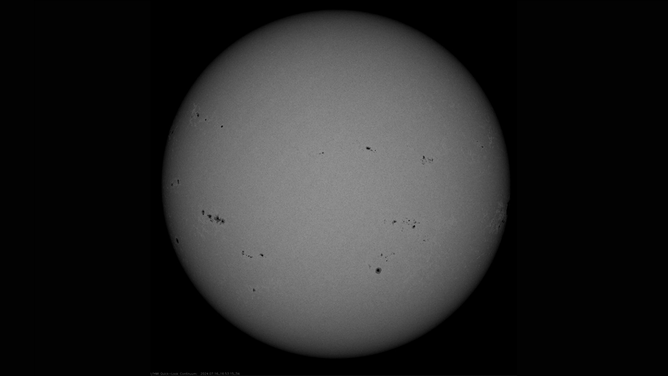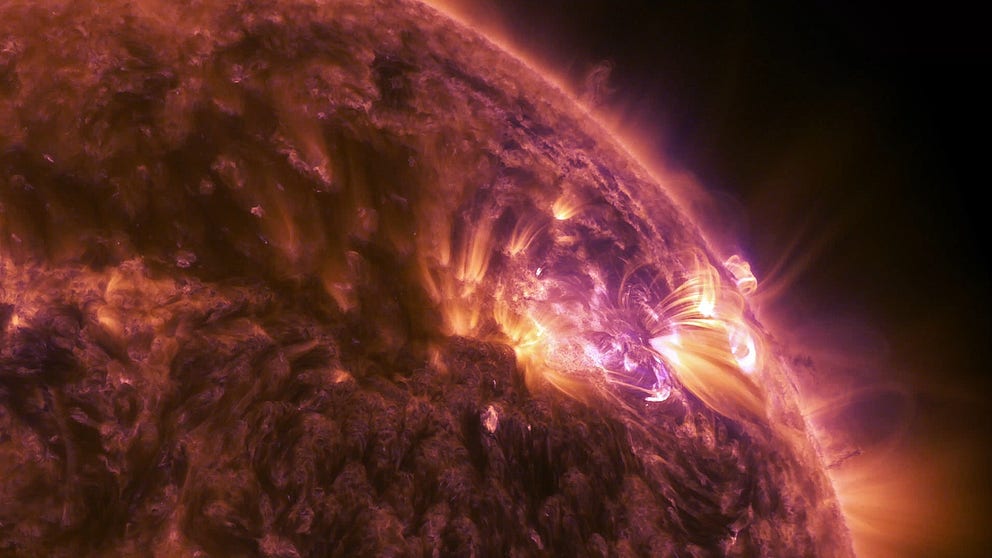Radio blackouts forecast as multiple sunspot regions erupt strong solar flares
Images from NASA satellites show the sun is currently pockmarked with sunspots. These active regions could produce more strong radio blackout events this week.
Space weather explained: What is a solar flare?
The largest explosions in the solar system, a solar flare is an explosion of energy that occurs on the sun’s surface, often appearing as a localized burst of bright light.
NOAA's space weather forecasters are monitoring not one active sunspot region but three potentially solar flare-creating areas of the Sun that could produce radio blackouts this week.
The Sun is approaching the Solar Maximum, the period in an 11-year cycle when the most sunspots are forecast. Sunspots can produce strong solar flares and associated coronal mass ejections. If these eruptions are Earth-directed, NOAA's Space Weather Prediction Center will issue Geomagnetic Storm Watches.
SEE THE SIGHTS AS AN EXTREME GEOMAGNETIC STORM TRIGGERS JAW-DROPPING AURORAS AROUND THE WORLD
SWPC is closely monitoring Region 3738, which produced a strong X1.9 flare on Tuesday morning. The flare created strong radio blackouts that impacted high-frequency radio communications for about an hour on the sunlit side of Earth.
NASA's Solar Dynamics Observatory captured the image below of the solar flare, which is seen as the bright flash on the right side.

A NASA Solar Dynamics Observatory image of a solar flare, the bright flash on the right, captured on July 16, 2024. The image shows a subset of extreme ultraviolet light that highlights the extremely hot material in flares and which is colorized in gold.
(NASA/SDO)
Region 3738 was also responsible for a strong X1.2 flare on Saturday night and a minor M2.7 flare on Monday morning. According to the SWPC, this region should rotate to the western solar limb by Wednesday.
In addition to Region 3738, the SWPC is also watching Sunspot Regions 3751 and 3738. Photos from NASA satellites show the sun pockmarked with sunspots.
WHAT’S NEXT FOR NOAA’S WEATHER SATELLITES NOW THAT FINAL GOES HAS BEEN PLACED IN ORBIT?
These regions "have become active regions of more interest and increased flare probabilities and have contributed to the slight change of isolated R3 (strong radio blackout impact) events during the weeks," the SWPC wrote on Monday.

A NASA Solar Dynamics Observatory image showing multiple sunspot groups on July 16, 2024.
(NASA/SDO)
Space weather forecasters said the abundance of sunspot groups on the Sun's visible side could make minor and moderate radio-blackout-producing flares possible through Thursday.
In the coming months, the SWPC will have a new forecasting tool when NOAA's new GOES-19 satellite starts sending back data with the compact chronograph instrument. The new instrument will continuously monitor the Sun's outer atmosphere, known as the corona, allowing NOAA forecasters to see where extreme space weather like solar flares and coronal mass ejections originate.
The new solar storm forecasting capability should be online by spring 2025, in time for solar maximum.
